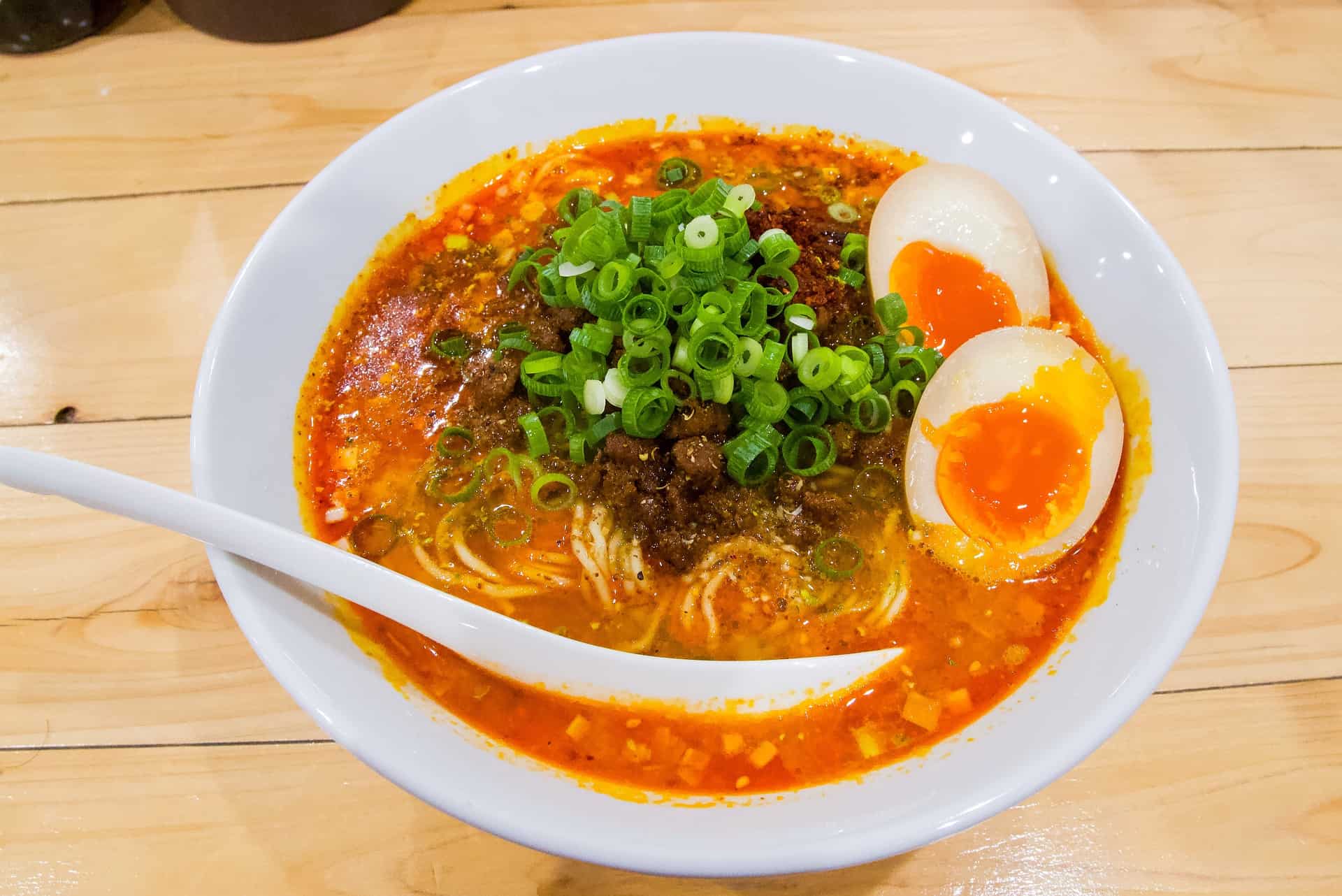 Do you like noodles but find them too spicy? Are you looking for a way to reduce the heat? Do you want to know how to reduce spice in noodles so you can enjoy them?
Do you like noodles but find them too spicy? Are you looking for a way to reduce the heat? Do you want to know how to reduce spice in noodles so you can enjoy them?
If you’ve ever had the misfortune of biting into a bowl of noodles that was too spicy for your taste, you know how unpleasant it can be. Too much spice can make even the most delicious food inedible. Fortunately, there are several ways to reduce the spiciness of noodles, so they are enjoyable again.
This article will discuss some simple techniques for reducing heat in your next noodle dish. From adding dairy products to cooling herbs and spices, these tips will help you tame overly spicy noodles easily!
Add Nuts or Nut Butter
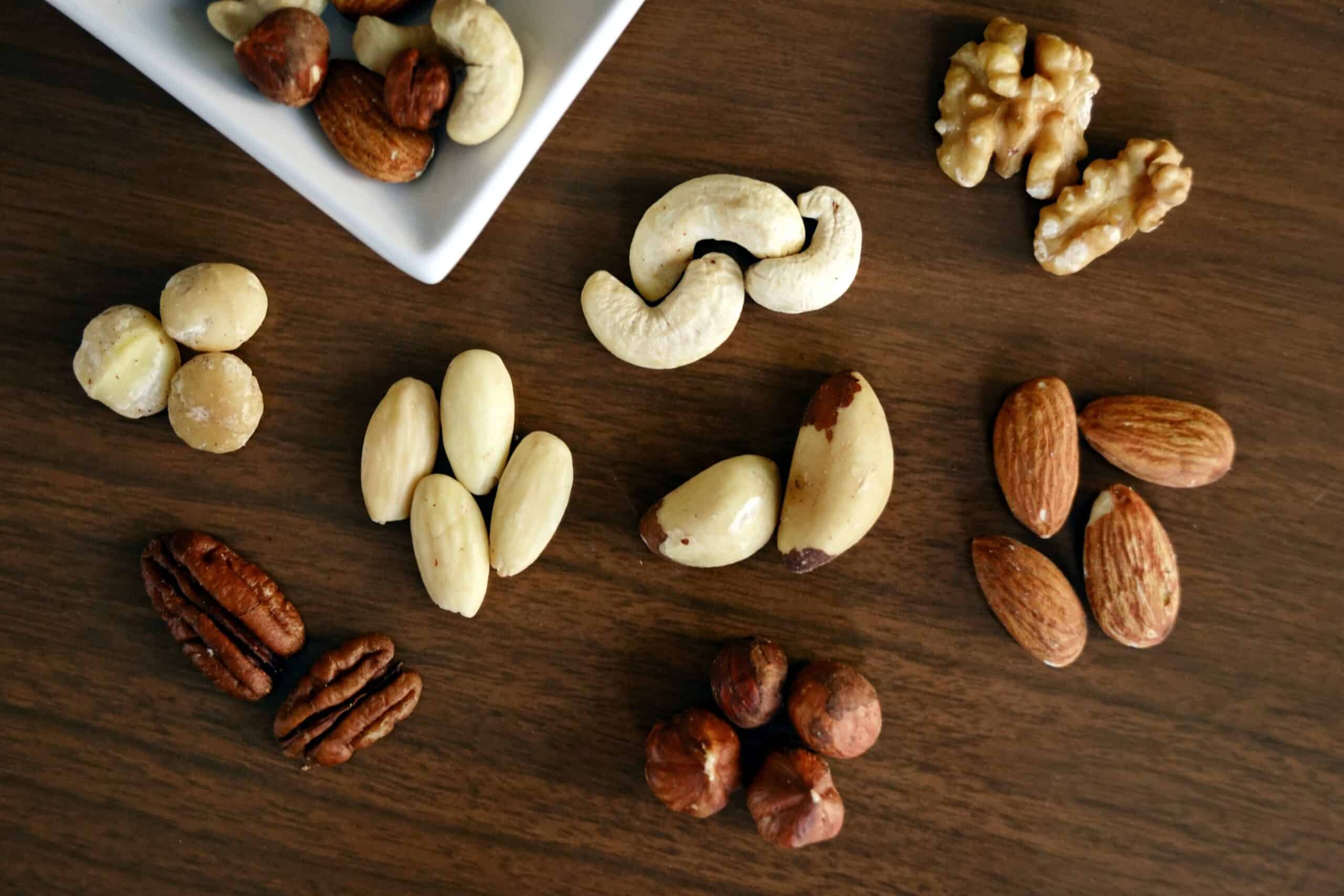
Adding nuts or nut butter to noodles can be an effective way of reducing their spiciness. The fats and oils in nuts and nut butter help counteract spices’ heat-producing components. This can help balance the flavors and make your noodles more enjoyable.
Adding nuts or nut butter is also a great way to add flavor, texture, and nutrition to your noodle dish. Nuts provide healthy monounsaturated fats, protein, minerals, and vitamins. They’re also packed with antioxidants that may support good health.
Walnuts and cashews are two types of nuts that pair especially well with noodles. Walnuts are known for their smoky, earthy flavor that can contrast nicely with ramen noodles. Cashews are creamy and milder in flavor and help mellow out overly spicy dishes.
For those who don’t eat nuts or have food allergies, nut butter, such as peanut butter or almond butter, is an excellent substitute for adding richness and creaminess without any additional spice. Nut butter contains similar nutrients to those found in whole nuts while often containing fewer calories and fat per serving size than whole nuts do.
If you don’t want the extra calories from adding either whole nuts or nut butter, you can opt for using crushed-up walnuts as a topping instead. Simply sprinkle them on top of your noodles after they’re cooked to enjoy the nutritional benefits without any extra added fat or calories from fat sources like oil or butter used during cooking.
Sprinkle in Sugar

The Scoville scale, used to determine how hot a chili pepper is, is probably already familiar to you. Only a few people know that the sugar-water solution required to neutralize the spice in a tasting test is the basis for the Scoville Heat Units used to rank peppers.
Another typical component used to reduce the heat of a meal is sugar. This is why a dash of sugar is often added to dishes that call for chili or pepper.
It’s best to sprinkle the sugar on gently. Too much sugar can mask the chili peppers’ flavor without changing the noodles’ overall flavor. Add a small quantity at a time (a teaspoon to start) and taste as you go until you attain the ideal sweetness and spice balance.
Brown sugar, coconut sugar, and maple syrup are just a few examples of sugars that can amplify your culinary creations’ flavors. The rich molasses flavor of brown sugar is a great way to enhance the umami flavor of any noodle dish.
In dishes with spicy chili flakes or other fiery ingredients, coconut sugar’s milder sweetness can provide a pleasant counterpoint. However, maple syrup’s woodsy scent and somewhat smoky flavor complement savory dishes like noodles in a unique way.
Some people find adding sugar to spicy food more enjoyable since it balances the heat while highlighting the other flavors. Caramelization, which occurs when sugars are added to a dish during cooking, forms a delicious crust on the top of the vegetables, meat, or fish used in the meal and on the noodles themselves.
Do The Dairy
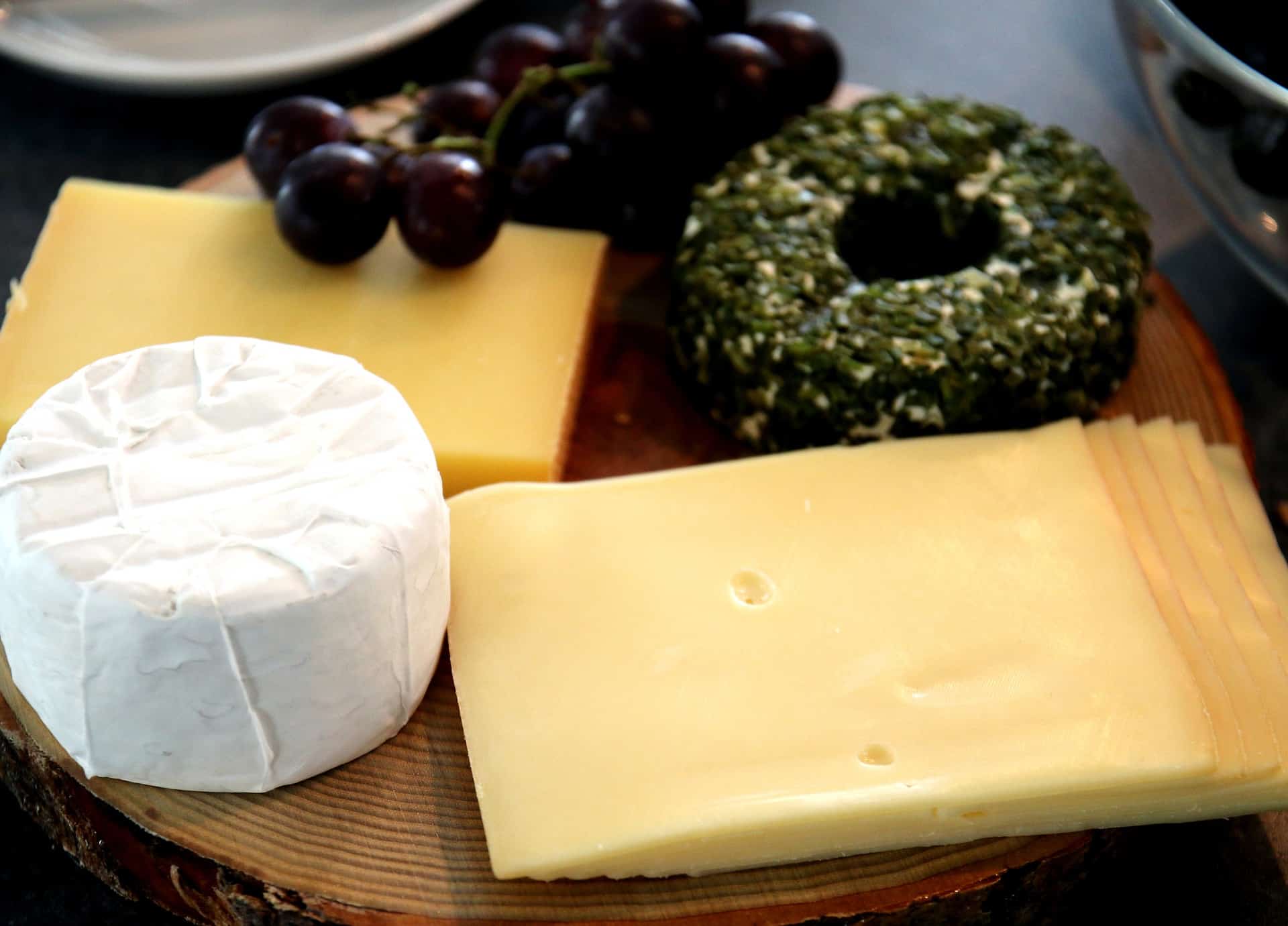
Are you looking for a dairy-based solution for reducing the spice in noodles? Adding ingredients like yogurt, sour cream, or cream cheese can help to balance out the heat and add extra flavor.
Yogurt is an excellent source of calcium, protein, and probiotics that benefit gut health. Greek yogurt provides twice as much protein as regular yogurt and has a thicker consistency that can give dishes a creamy texture without adding additional fat or calories.
Similarly, sour cream is made with cultured cream and can be used in place of yogurt if you don’t have any on hand.
On the other hand, cream cheese has a milder flavor than either yogurt or sour cream, but it’s higher in fat content. Use this ingredient sparingly as a garnish or topping to reduce the amount of spice in your noodles without adding too many calories.
Add Complimentary Herbs and Spices
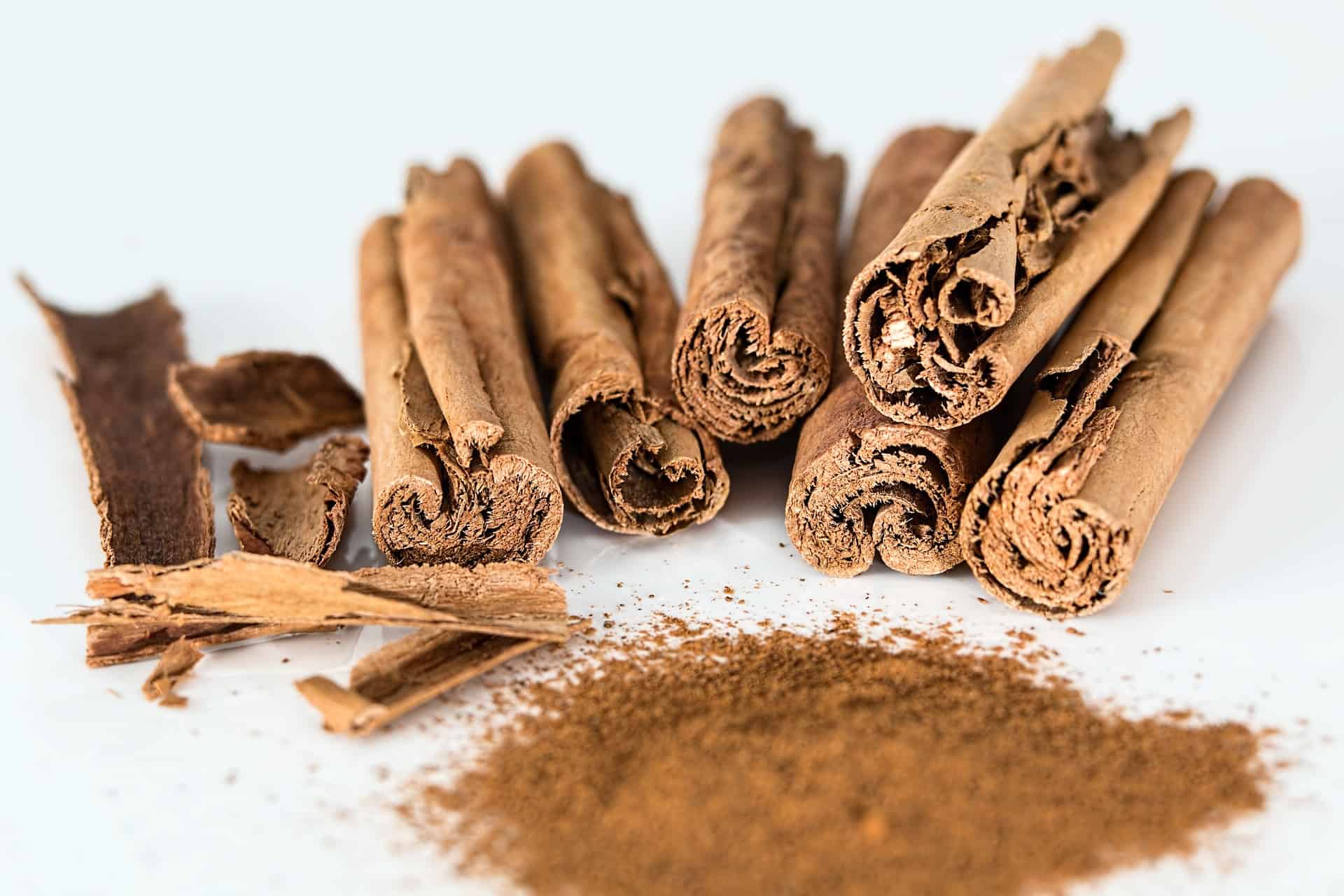
If you’re looking for an even better way to tone down the heat in your noodle dish without sacrificing flavor, try adding complimentary herbs and spices like cinnamon or nutmeg. These fragrant spices can help bring out the natural flavors of other ingredients while helping reduce the dish’s heat.
For an extra layer of flavor, sprinkle a pinch of cardamom or saffron onto your noodles before eating. Both ingredients are excellent choices for reducing spiciness without being overwhelming and contribute to the overall flavor profile of your dish while also providing you with many health benefits, such as helping to alleviate digestive issues and boosting immunity.
Acid Defeats Heat
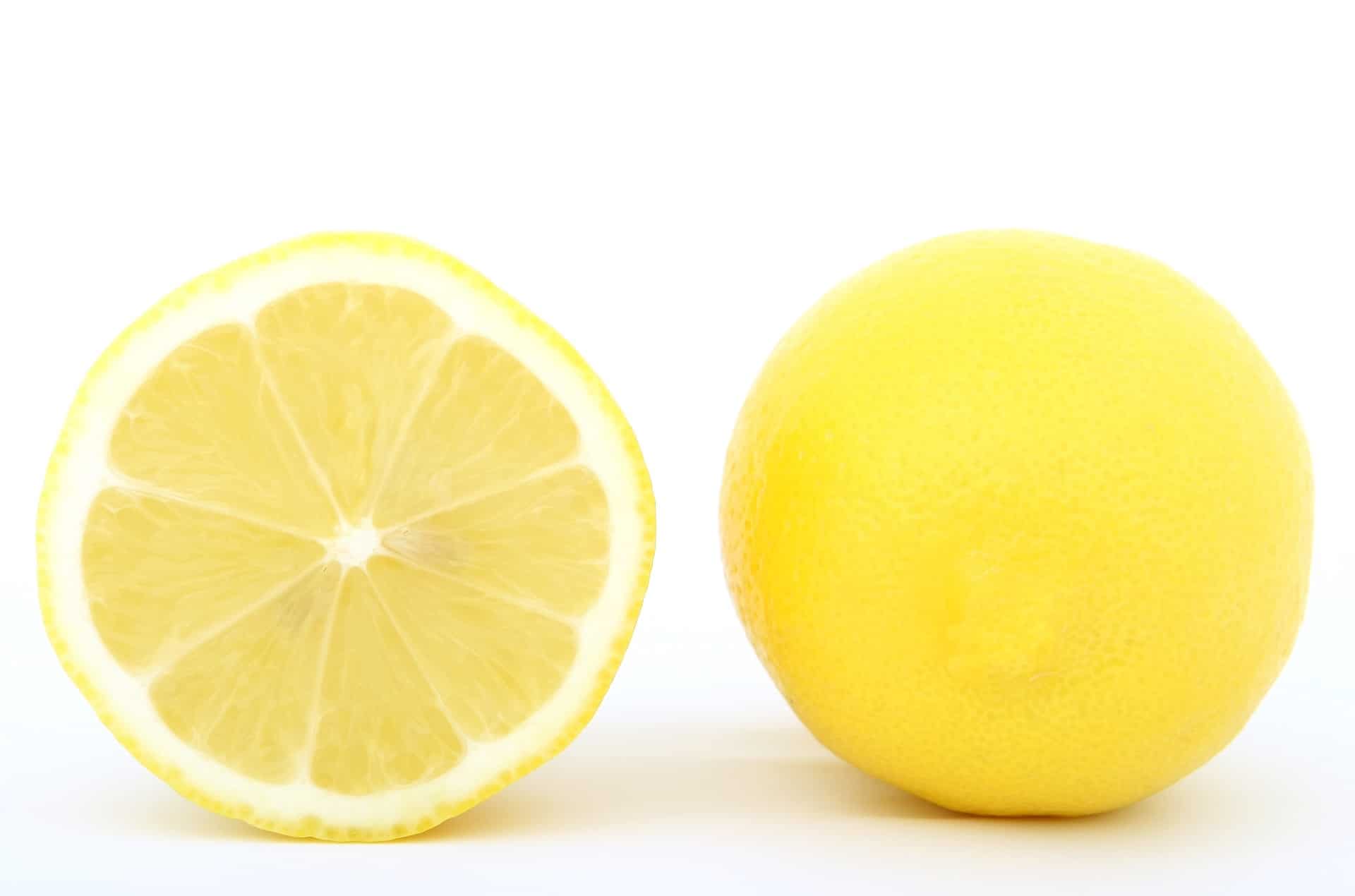
Acid is a fantastic heat neutralizer; you can use it to make any dish taste better. The noodles can be more tolerable by cutting the heat with some acid. You can use common ingredients to add acidity to dishes, including lemon juice, lime juice, or vinegar.
Adding a splash of citrus juice like lemon or lime juice to your noodle dish is a terrific way to brighten up the dish without masking the other flavors. Use only a tiny amount (about 1 to 2 teaspoons) of these juices at a time, and taste as you go to determine how sour you want it.
An additional pantry ingredient that might lessen the heat of noodles is vinegar. The flavor of vinegar can change drastically from one kind to another. Try out several kinds of vinegar, like apple cider vinegar, white balsamic vinegar, or rice vinegar, until you find the right flavor profile. In general, a ratio of around 1 tablespoon of vinegar to 1 cup of noodles is good to start with and then adapt to personal preference.
Last but not least, tomatoes are a great natural source of acidity that is sometimes forgotten when cooking fiery dishes like noodles. Tomatoes add a new dimension of taste and texture to your dish and tone down the heat of bold spices like hot peppers, cayenne pepper, or paprika.
Add Meat And Veggies
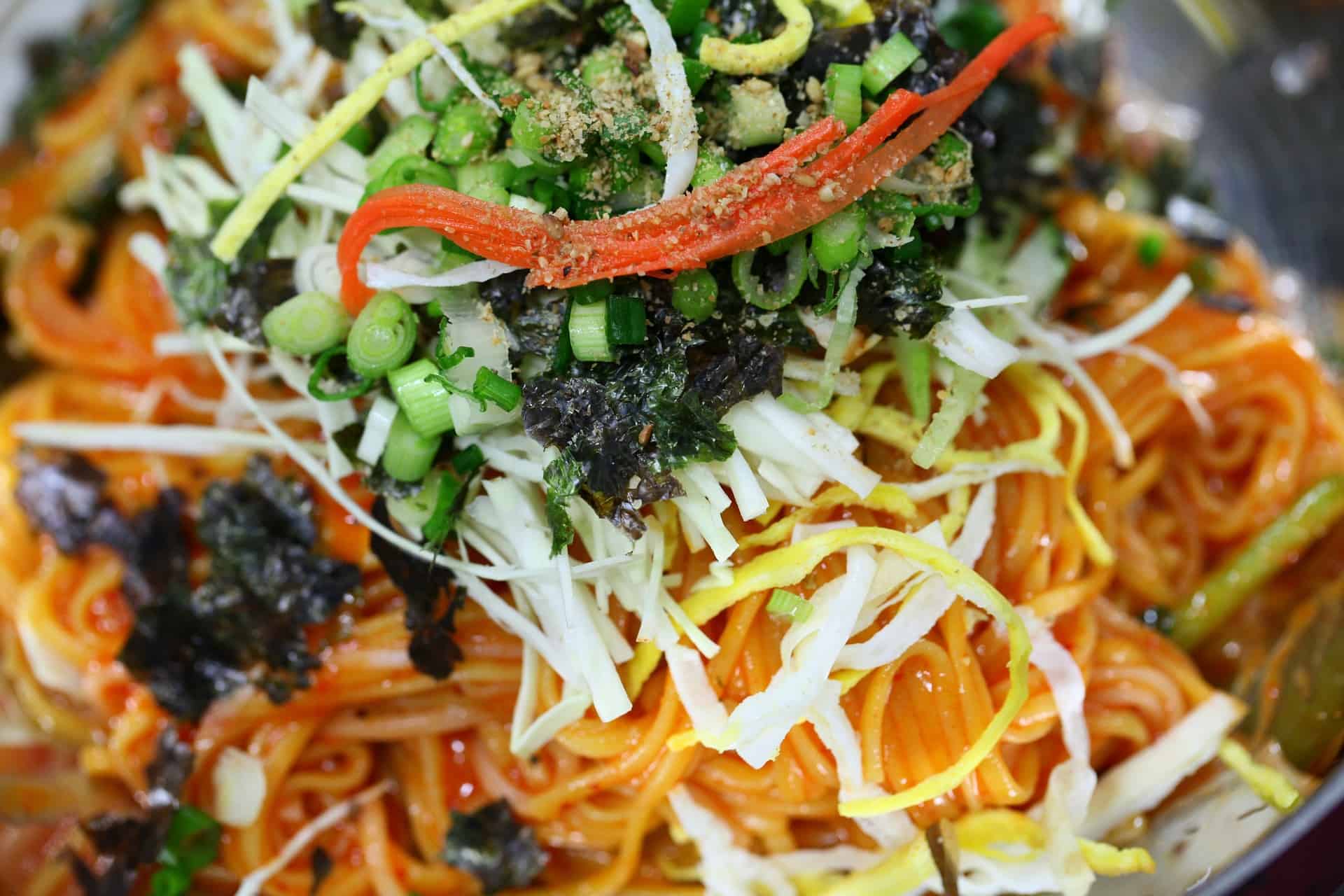
Do you need an even easier solution? Adding meat and vegetables to your spicy Korean noodles can help reduce the spice without adding extra ingredients. You can use cooked chicken, beef, pork, or turkey as a protein source. Or you can add some cooked vegetables such as bell peppers, mushrooms, or zucchini for added flavor and texture contrast.
The combination of protein and vegetables will create a hearty, still flavorful dish without being too spicy. Plus, these additions give you more nutrition from the proteins and fiber from the vegetables, making this a great healthy meal choice!
Add Eggs
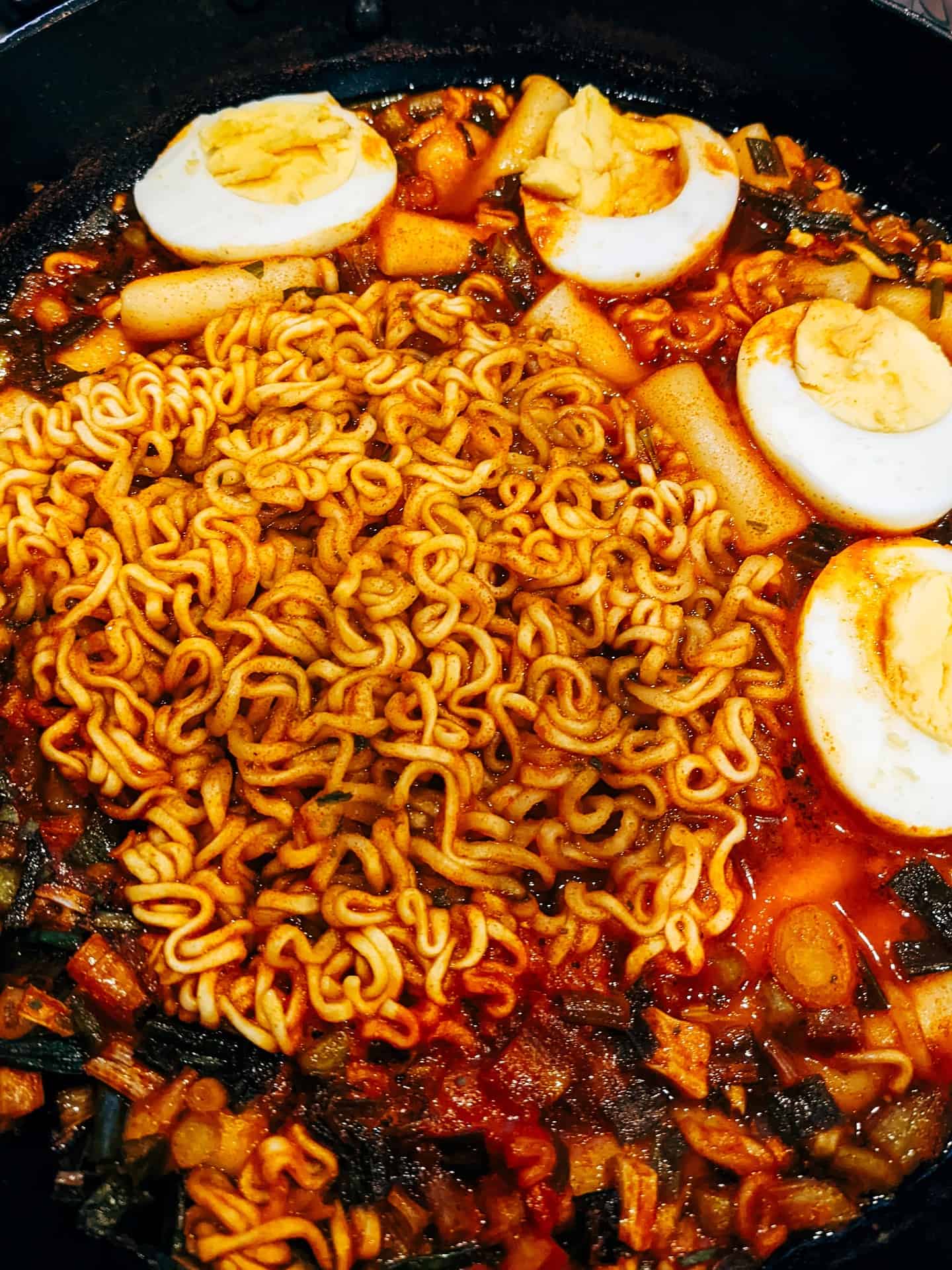
Can eggs be used as a way to reduce the spice of noodles? And how can they help to achieve this goal without adding additional flavors or textures?
Eggs are not only a delicious and nutritious addition to many instant noodle dishes, but they can also help mellow out the spiciness of your dish. The egg whites’ protein helps bind together the spices and other ingredients, creating a more mellow flavor.
To use eggs in your noodle dish, whisk one or two eggs with a tablespoon of water and pour over cooked noodles. Stir gently until the egg mixture is evenly distributed throughout the noodles.
The heat from the noodles will cook the eggs and create an even, fluffy texture. This is a great way to reduce the spice of your noodles without sacrificing flavor or texture!
Add Starch or Grains
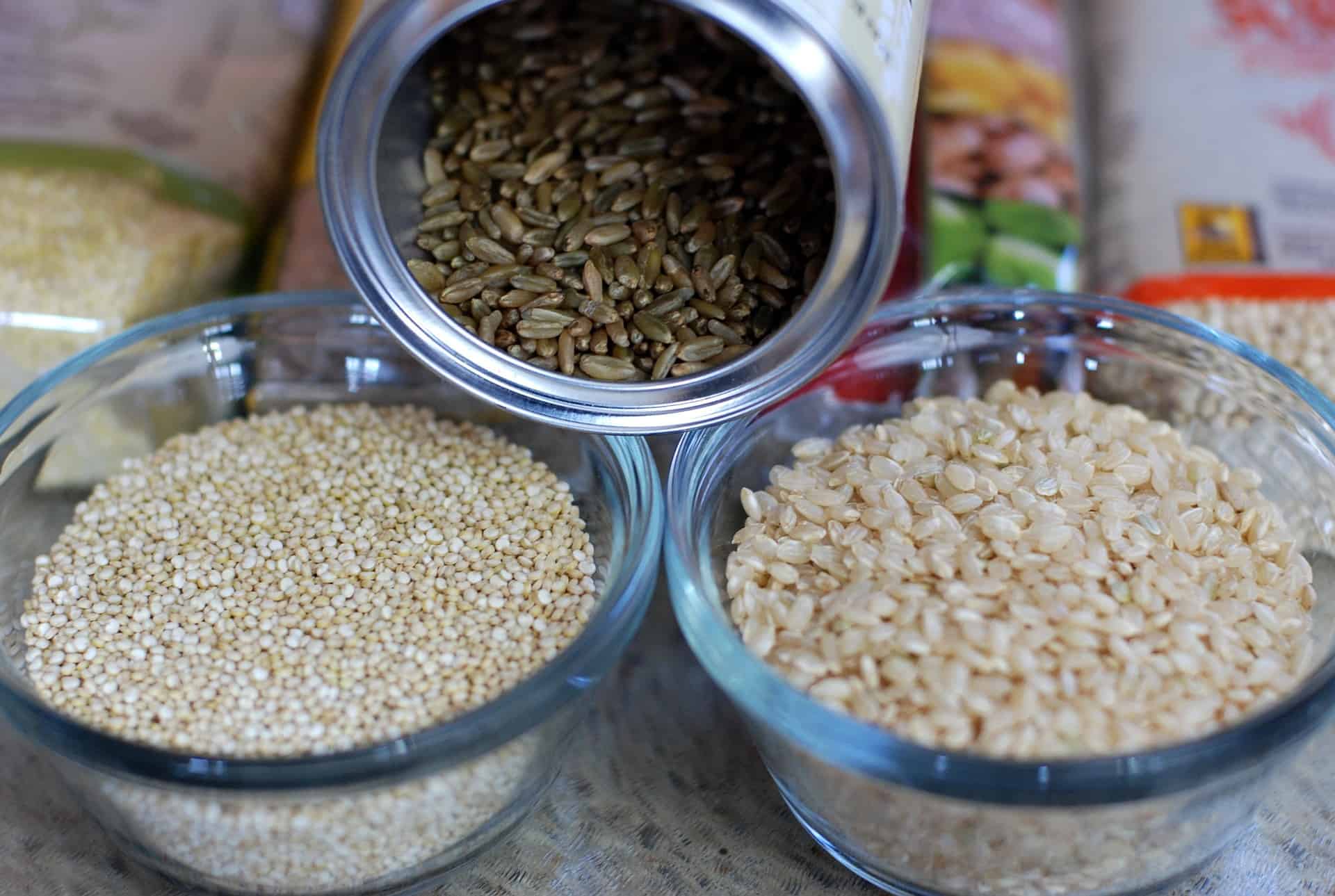
Adding extra starch or grains to noodles can be a great way to reduce the intensity of the spice. This strategy works well when the spiciness comes from fiery peppers and gives you an easy way to control how much heat goes into your meal.
By reducing the number of peppers or opting for a milder variety, you can make sure that your noodles don’t end up too spicy – but if you’ve gone a bit overboard, adding some large grain-based ingredients like rice or quinoa will help to absorb some of that heat.
This doesn’t have to diminish flavor either, as both starchy components work great with all sorts of sauces, ensuring your dish packs delicious energy in every bite.
Add Water or Unseasoned Broth
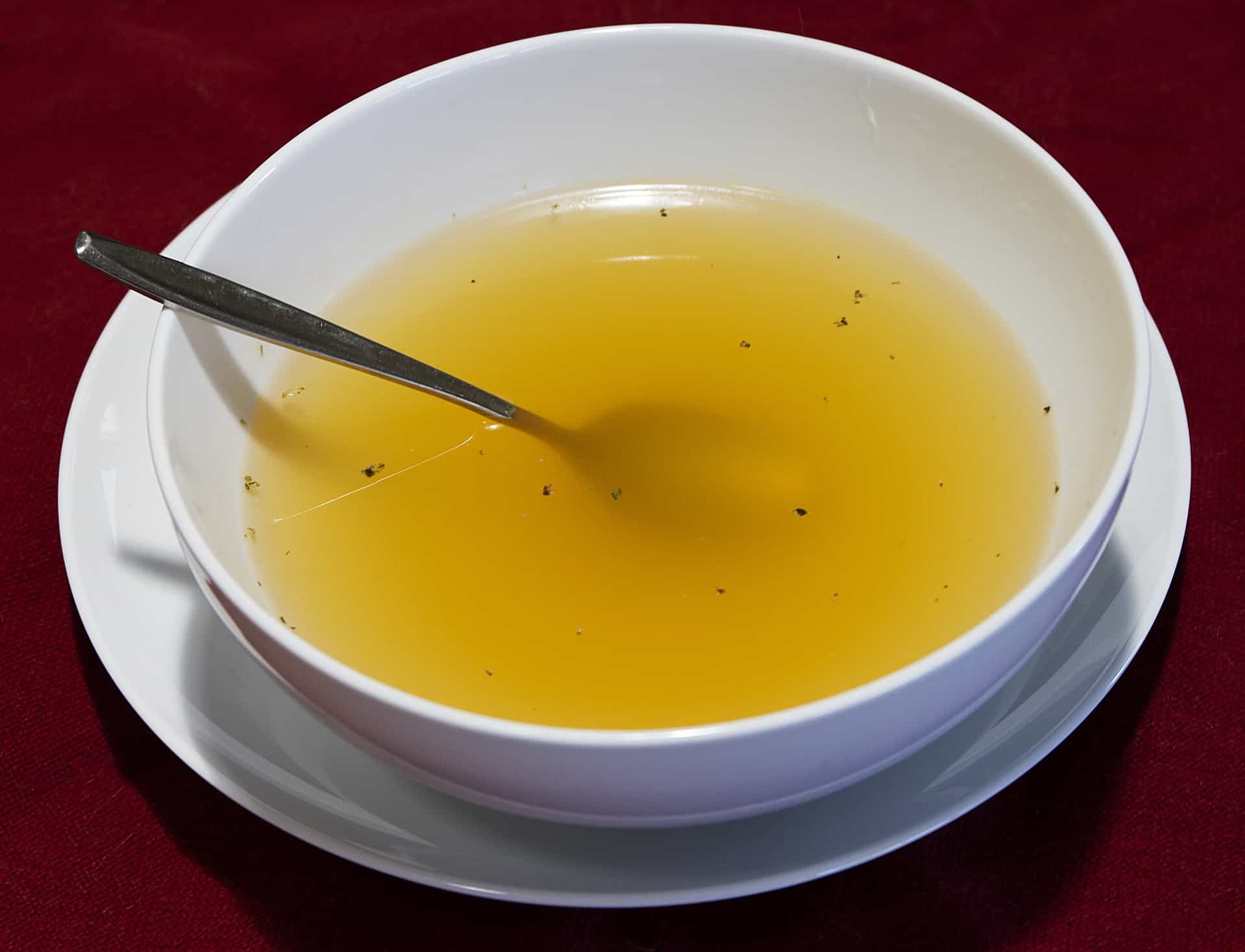
Spicy noodle dishes are a staple of Asian cuisine, and they don’t disappoint. Those who find the dish’s spice level too high might dilute it by adding water or unseasoned broth.
By diluting the spices, less capsaicin remains on the noodles’ surface, which translates to a milder flavor experience. In order to learn about their own spice preferences without wasting food, home cooks can start by replacing half of the sauce with liquid and then taste tests.
Alternatively, people who aren’t afraid of trying new things might take their food to the next level by experimenting with other sauces, such as fermented black beans or sesame paste.
Whether you use water or unseasoned broth, this simple addition lowers the concentration of spices and helps achieve the desired level of spiciness. If needed, add a flavor-rich ingredient like miso paste, soy sauce, or sugar to add consistency.
Frequently Asked Questions
Q: Does eating spicy food have any health benefits?
A: Eating spicy food may have some health benefits. Studies have found that capsaicin, the active ingredient in chili peppers, has anti-inflammatory and antioxidant properties, which can help reduce the risk of certain diseases such as cancer, diabetes, and heart disease. Moreover, eating hot foods helps to boost metabolism and ward off hunger cravings. However, it’s important to note that consuming too much spicy food can cause stomach discomfort and ulcers.
Q: How do I know if my noodles are too spicy?
A: The best way to test the spiciness of your noodles is to take a small bite and wait a few seconds before making a judgment. If your mouth feels hot and uncomfortable, then the spiciness is too high. Otherwise, if you can tolerate the heat and enjoy a pleasant flavor, then the noodles are likely within an acceptable range of spice levels.
Q: Can I use sesame seeds or sesame oil on my rice noodles?
A: Yes. You can use sesame seeds and sesame oil to add flavor to your rice noodles. The unique nutty taste of sesame seeds pairs perfectly with the savory flavors of most noodle dishes. In contrast, a few drops of sesame oil adds depth and complexity to a dish without overpowering it.
Q: Can I use fish sauce and tomato sauce to reduce the spiciness of noodles?
A: Yes, fish sauce and tomato sauce can help reduce the spiciness of noodles. The saltiness of fish sauce helps to mellow out the heat from chili peppers, while tomato sauce’s sweetness helps balance out any harsh flavors.
Q: Why is my recipe for noodles too spicy?
A: If your recipe for noodles is too spicy, it is likely because you have added too much chili pepper or other spicy ingredients. To reduce the dish’s spiciness, try reducing the number of peppers used, adding a few tablespoons of liquid (water or broth), or substituting some of the spices with milder ingredients. If all else fails, try adding a dollop of sour cream or yogurt to cool the spiciness down.
Final Words
When it comes to reducing the spiciness of noodles, you can try plenty of methods. Whether you’re a fan of mild flavors or crave something more daringly spicy, mastering how to reduce spice in noodles will take your cooking skills up a notch! Therefore, experimenting with different techniques will help you better understand what works best for your taste buds and palate preferences. With these tips in mind, we hope you’ll have no trouble creating delicious noodle dishes that everyone can enjoy!
